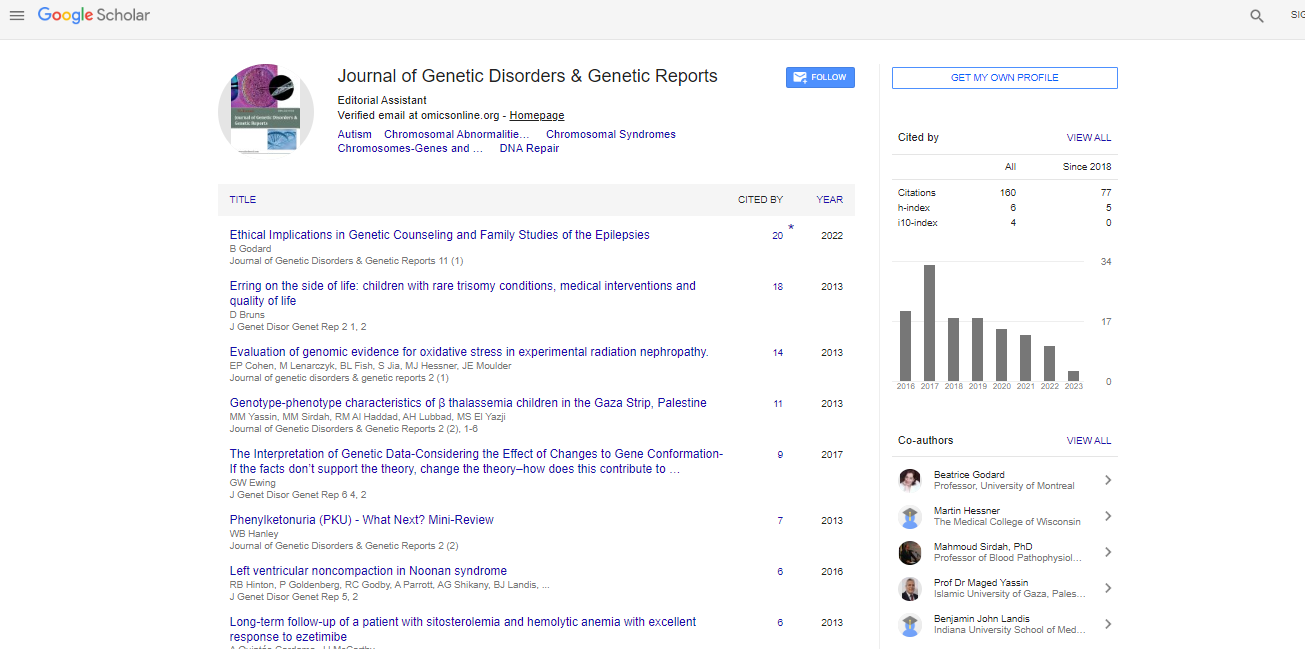Research Article, J Genet Disor Genet Rep Vol: 10 Issue: 1
Molecular characterization of Galactosemia in Iran: identification of Eleven mutations.
Abstract
Background: Classical Galactosemia (CG) is an autosomal recessive disease occurs in newborn and its outcome is galactose metabolism abnormality which is caused by the galactose-1-phosphate uridyltransferase enzyme deficiency. It is classically typified by neonatal galactose intolerance, with primary clinical manifestation such as neonatal jaundice and liver failure and late complications such as reproductive and motor dysfunctions. Genetic backbones of CG are various and include heterogeneous hundreds of mutations which are taken place in the GALT gene and linked to certain populations. Methods: This study evaluates mutations identified in 31 patients with CG and parents of them in general population of Iran. The frequency of mutations in this gene was assessed by direct sequencing and RFLP-PCR , damage properties of missense mutations were analyzed in silico. Results: A total of 11 different missense mutation variations in the GALT gene were found among our patients. The most common variation was p.Q188R (48 alleles, 51.6%), followed by p.K285N (9 alleles, 9.67%). Seven other mutations, c.404C>T (p.S135L), c.626 A>C (p.Y209) c.958 G>A (p.A320T), c.1030C>A (p.Q344K), c.940A>G (p.N314D), c.997C>T (p. R333W), c.881T>A (p. F294Y) have the same frequency and were 3.22% and Two mutations, c.442C>T (p. R148W), c.1018G>A (p. E340K) were 6.45% and 9.67 %, respectively. The in silico analysis results suggested that this 11 mutation Except of N314D are consistence with damaged variation in the GALT protein. Conclusions: We conclude that the mutations causing galactosemia are highly heterogeneous and that Q188R, K285N are two common galactosemia mutations which include 61.2% genetically backbone in our CG population. Furthermore Q188R, K285N and E340K were the most frequent mutations in the Iranian population. In silico analysis showed a high potentially damaging effects of the ten variations on the GALT protein therefore this study highlighted and suggested the importance of molecular diagnostic testing prior to making any treatment.
 Spanish
Spanish  Chinese
Chinese  Russian
Russian  German
German  French
French  Japanese
Japanese  Portuguese
Portuguese  Hindi
Hindi 



